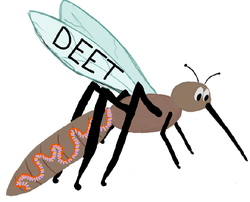
The hardware and bandwidth for this mirror is donated by METANET, the Webhosting and Full Service-Cloud Provider.
If you wish to report a bug, or if you are interested in having us mirror your free-software or open-source project, please feel free to contact us at mirror[@]metanet.ch.

Design by Sarah Watt
Description of DEET adapted from manuscript. The primary use of the differential expression enrichment tool (DEET) is to allow researchers to perform gene set enrichment of their own gene list against the thousands of pairwise DE comparisons stored within DEET. Here, users input a list of genes with an associated p-value and summary statistic (i.e. fold-change), and the DEET_enrich() function will output which pairwise comparisons are associated with the inputted gene list at three levels: overlapping genes, pathways, and transcription factor (TF) target genes (see “Materials and Methods” for details). The gene-set enrichment within DEET_enrich() uses ActivePathways to test for significant overlap between gene sets. Unlike traditional pathway enrichment, the gene lists stored within DEET are also weighted by p-value and fold-change. DEET_enrich() leverages the summary statistics stored within DEET by correlating the fold-changes of overlapping DEGs between the researchers’ inputted gene list and each of the enriched comparisons within DEET. This correlation analysis provides further evidence that the inputted gene list shares common biological underpinnings with the overlapping gene list because not only is there a significant overlap in DEGs, but those overlapping DEGs are changing in a similar pattern. Simultaneously, DEET_enrich() uses ActivePathways to enrich the researchers inputted gene list against the same biological pathway and transcription factor gene sets performed on all of the pairwise comparisons within DEET. Finally, DEET_enrich() leverages these enriched pathways and transcription factors to identify which comparisons significantly overlap with the researchers’ inputted genes based on their shared biological pathways and transcription factors. The secondary use of DEET is to interact with the results of the 3142 unique DE comparisons to find commonalities across different experimental designs. Specifically, the DEET_feature_extract() function identifies genes whose p-values drive metadata (e.g., cluster ID, number of DEGs in the study, study source, if TF is enriched etc.). DEET_feature_extract() uses an elastic net regression as well gene associations based on correlation, ANOVA, and Wilcoxon’s test depending on whether the inputted metadata is continuous, categorical, or binomial respectively.
ActivePathways has developed a 2.0.0 version, which has changed the
format of their input variables. If you see the below error thrown while
using DEET_enrich, please update ActivePathways and try
again.
```{r AP_2023, eval=FALSE}
Error in ActivePathways::ActivePathways(scores = comp, gmt = gmt_BP, background = background, : unused arguments (geneset.filter = c(15, 2000), merge.method = “Brown”, correction.method = “fdr”)
### Shiny App
If you prefer a point-and-click equivalent with >90% of the capability and flexibility of the DEET R package, we encourage you check out our Shiny App!
https://wilsonlab-sickkids-uoft.shinyapps.io/DEET-shiny/
### Manuscript
The manuscript is currently published in Nucleic Acids Research - Genomics and Bioinformatics:
Sokolowski, Dustin J., Jedid Ahn, Lauren Erdman, Huayun Hou, Kai Ellis, Liangxi Wang, Anna Goldenberg, and Michael D. Wilson. "Differential Expression Enrichment Tool (DEET). an interactive atlas of human differential gene expression." NAR Genomics and Bioinformatics 5, no. 1 (2023): lqad003.
#### Running DEET_enrich
Users inputs a list of genes to identify which DE comparisons within DEET are significantly enriched based on overlapping DE genes, pathways, and TF information.
```{r DEET_enrich, eval=FALSE}
data("example_DEET_enrich_input")
data("DEET_example_data")
DEET_out <- DEET_enrich(example_DEET_enrich_input, DEET_dataset = DEET_example_data)
The proccess_and_plot_DEET_enrich function uses ggplot2
to generate barplots and dotplots of the User’s gene list against the
gene sets found within DEET. It uses the direct output of DEET_enrich to
plot and relies on ggplot functions.
```{r proccess_and_plot_DEET_enrich, eval=FALSE}
plotting_example <- proccess_and_plot_DEET_enrich(DEET_out, text_angle = 45, horizontal = TRUE, topn=4)
The `DEET_plot_correlation` function uses ggplot2 to generate scatterplots of the coefficients between the users inputted gene list and the log2FoldChanges associated with the DEGs in DEET. If the inputted list did not contain coefficients, then this function is not used.
```{r DEET_plot_correlation, eval=FALSE}
correlation_input <- DEET_out$DE_correlations
correlation_plots <- DEET_plot_correlation(correlation_input)
The DEET_feature_extract uses an elastic net regression,
wilcoxon test, ANOVA, and correlation (depending on the response
variable) to identify genes that are associated with a particular
response (e.g., whether a TF is enriched) across the pairwise
comparisons stored within DEET.
```{r DEET_feature_extract, eval=FALSE}
data(DEET_feature_extract_example_matrix) data(DEET_feature_extract_example_response) single1 <- DEET_feature_extract(DEET_feature_extract_example_matrix, DEET_feature_extract_example_response,“categorical”)
## Downloading the DEG databases within DEET
All processed DEGs, metadata, and enriched pathways in formats compatible with this package as well as other methods such as gene set enrichment analysis are stored here: http://wilsonlab.org/public/DEET_data/
No functions within DEET automatically load data for the user, so the data either needs to be downloaded directly from the ftp, or using the downloader function.
The `DEET_data_download` function, with possible inputs "ALL", "metadata", "enrich", and "feature_extract" automatically downloads the data required to run `DEET_enrich` and/or `DEET_feature_extract`.
We reccomended using:
```{r download_data, eval=FALSE}
downloaded <- DEET_data_download("ALL")
metadata <- downloaded$metadata
DEET_feature_extract_input <- downloaded$DEET_feature_extract
DEET_enrich_input <- downloaded$DEET_enrich
Here: DEET_enrich_input replaces
DEET_example_data for DEET_enrich().
DEET_feature_extract_input replaces
DEET_feature_extract_example_matrix for
DEET_feature_extract() Lastly, metadata is not
directly used in any of the function, but summarizes all of the pairwise
comparisons using the following columns.
For the structure of these datatypes, please use
?DEET_data_download, as they’re explained in the
value column. ?DEET_example_data also
continuous to break down the structure of the DEET dataset used in
DEET_enrich_input, if additional detail is required.
Once download, save these data and DEET can be used offline.
DEET relies on the following dependencies which should be downlaoded/updated with DEET automatically. Please ensure that these packages are not open when installing DEET.
Because all dependencies are in CRAN, installation should be straightforward.
```{r install_developter, eval=FALSE}
devtools::install_github(“wilsonlabgroup/DEET”)
2. CRAN (Stable Release)
```{r install_cran, eval=FALSE}
install.packages("DEET")
These binaries (installable software) and packages are in development.
They may not be fully stable and should be used with caution. We make no claims about them.